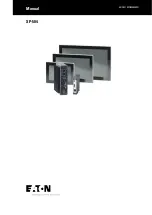
16
5 Operations
There are a series of operational guidelines for the MAKSIWA LDF Combination Belt and Disc Sander
that must be followed. These guidelines aim to increase the life of your equipment and offer safe and
risk-free work for the operator. This product is designed to perform operations on straight, curved,
radial and chamfered parts in wood, plastics, metals and ceramics. Used correctly, you will have high
performance and precision equipment for many years free of problems and defects.
ATTENTION! Accidental contact with the sandpaper during the operation can remove parts of the
fingers or cause major injuries. Protective Gloves and Guards reduce this risk and should always be
used when operating this machine.
1.
Before making any adjustments or replacing equipment, turn off the machine and remove the
outlet plug.
2.
Check that all screws and handles are tight and firm before starting any process. Often, due to
some vibration, these parts tend to loosen on their own.
3. The protection guards must be properly installed, adjusted and secured.
4. All moving parts (sandpaper, shafts and motor) need to have enough space to move freely.
5. Wait for the sandpaper to reach its maximum speed before start operating (about 2 seconds).
6. The motor must rotate counterclockwise, as well like sandpaper. The tape sandpaper must run
from the right to the left.
7. Do not force the workpiece excessively into any surface of the sandpaper.
8. Always support the workpiece when it is sanding, either on the disc or on the tape.
9. Don’t try to quickly push a corner of a workpiece against sandpaper. This can cause a bump that
can result in serious personal injury.
10. The Stop is installed on the back of the sanding tape to prevent the workpiece from escaping
and running in the sandpaper direction.
5.1 Tape Sanding Operations
1. Adjust the desired angle for sanding according to the type of your work piece.
2. Use the Stop to support the workpiece and avoid let it escape and cause accidents.
3. If you want to sand internal curves, remove the Rear protection on the right side of the sandpaper
and use this area for this type of operation. This protection should only be removed for this type
of operation. Avoid operating other surfaces without this protection.
4.
When sanding a thin workpiece, hold it firmly across the surface supporting one of the sides on
the Stop. Take care with your fingers on any operation. Use suitable protective gloves.
5. When sanding long pieces, do not apply pressure to the entire surface along the part. Apply









































